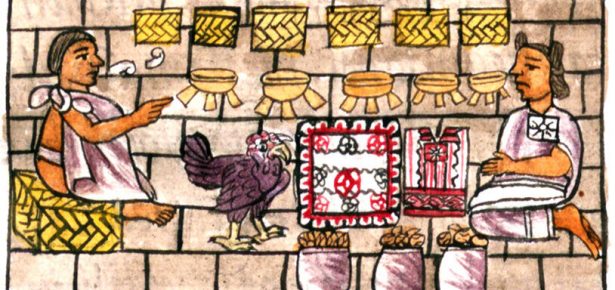
We do! The Aztecs have gotten a lot of bad press over the years. Popular accounts stress human sacrifice, warfare, and imperial exploitation. Although historians and archaeologists have tried for decades to counter such biases, that effort has had only partial success. We are both Aztec specialists, and we have published many technical books and papers—not to mention general textbooks—on Aztec society. While the humanization of the Aztecs has been a major theme in our publications, it has taken us quite a while to come up with a new way to communicate Aztec society in a vivid and accessible, yet still accurate, format.
Frannie Berdan is an anthropologist and ethnohistorian—using documents (in Spanish and Nahuatl) to reveal the operation of the Aztec economy and society. Her publications cover a wide range of topics, including Aztec markets and money, imperialism, local town councils, crime and punishment, hieroglyphic writing, and how the Aztecs made glue. Mike Smith is an archaeologist who has excavated rural and urban sites in the provinces of the Aztec Empire, focusing on household activities and conditions, including their interactions with wider areas, styles, and empires. Together we (think) we have published more books and articles on the Aztecs than any other two scholars outside of Mexico (although we haven’t counted!).
Our approach to telling the stories of the Aztec peoples takes two viewpoints. In Part I, we zero in on the lives of different kinds of people. We devote one chapter each to six categories—an emperor, a priest, a featherworker, a merchant, a farmer, and a slave. For each, we detail their place in society, their upbringing and training, and their daily activities. We show how such individuals might get in trouble, and how they worked their way out of a jam. Our account focuses on variation with each category; we don’t assume that all merchants, or all priests, were alike. These chapters allow us to tell what life was like at a very basic, daily, level. We use the device of fictional vignettes—stories of individuals—to start each chapter.
Our second viewpoint, in Part II, focuses on four key settings where different kinds of people—those described in Part I and others—interact around an important event. The four chapters describe a childbirth, a day at the market, a legal case tried in a courthouse, and a battle. As in Part I, these settings allow us to access life as it was lived, avoiding the abstract descriptions of most publications. For example, there are ample published descriptions and analyses of Aztec marketplaces (many written by the two of us!), but our chapter 8 takes the reader into the market, while also conveying the more general context of Aztec markets.
We think that the combination of archaeology and ethnohistory, and our joint skills, have led to a unique and vivid account of life in Aztec central Mexico.
Latest Comments
Have your say!